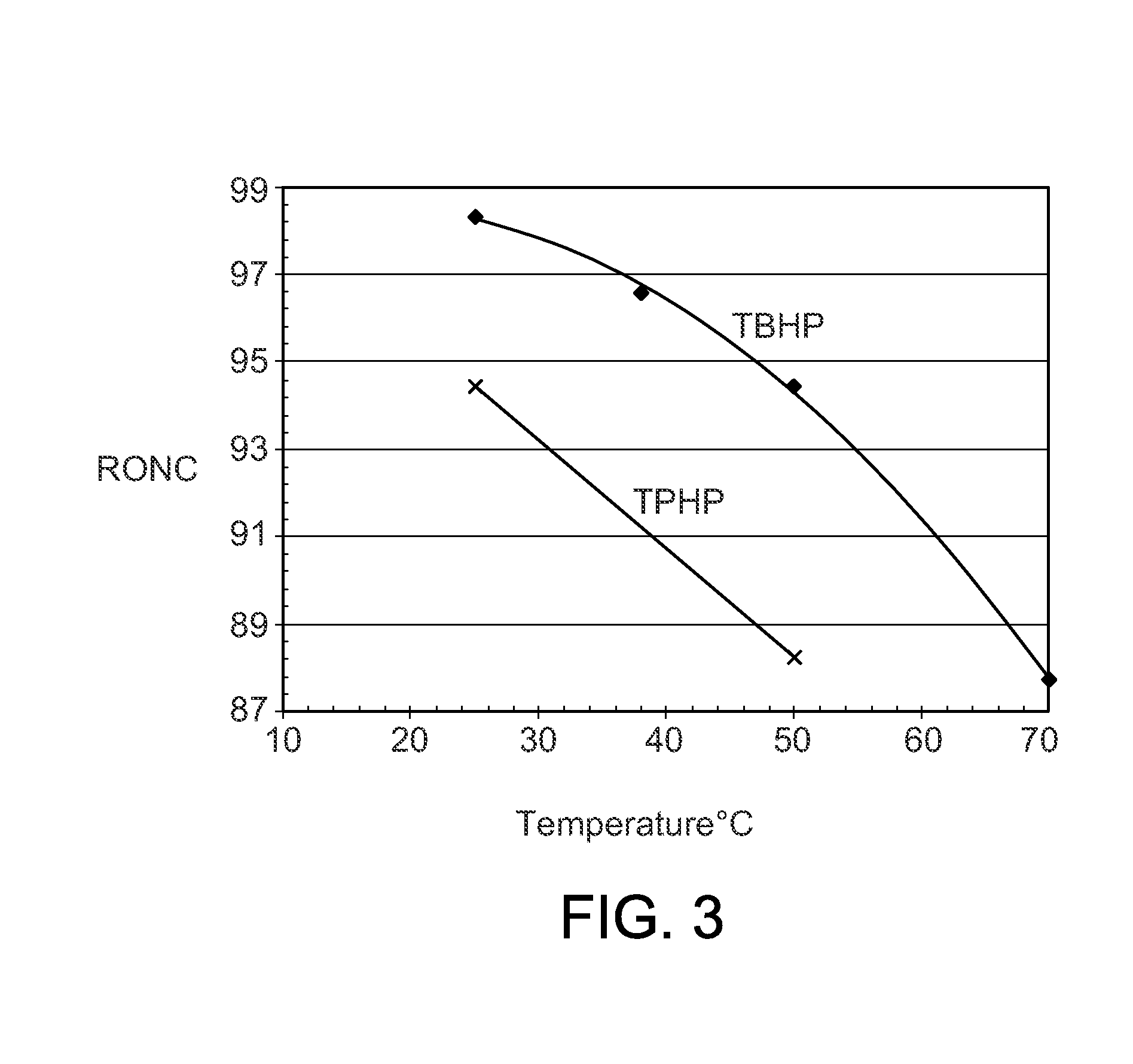Asymmetric phosphonium haloaluminate ionic liquid compositions
- Summary
- Abstract
- Description
- Claims
- Application Information
AI Technical Summary
Benefits of technology
Problems solved by technology
Method used
Image
Examples
example 1
Preparation of Tributyldodecyl Phosphonium Chloroaluminate Ionic Liquid
[0043]Tributyldodecyl phosphonium chloroaluminate is a room temperature ionic liquid prepared by mixing anhydrous tributyldodecyl phosphonium chloride with slow addition of 2 moles of anhydrous aluminum chloride in an inert atmosphere. After several hours of mixing, a pale yellow liquid is obtained. The resulting acidic IL was used as the catalyst for the alkylation of isobutane with 2-butenes.
example 2
Alkylation of Isobutane with 2-Butene Using Tributyldodecylphosphonium-Al2Cl7 Ionic Liquid Catalyst
[0044]Alkylation of isobutane with 2-butene was carried out in a 300 cc continuously stirred autoclave. 8 grams of tributyldodecylphosphonium (TBDDP)-Al2Cl7 ionic liquid and 80 grams of isobutane were charged into the autoclave in a glovebox to avoid exposure to moisture. The autoclave was then pressured to 500 psig using nitrogen. Stirring was started at 1900 rpm. 8 grams of olefin feed (2-butene feed to which 10% n-pentane tracer was added) was then charged into the autoclave at an olefin space velocity of 0.5 g olefin / g IL / hr until the target i / o molar ratio of 10:1 was reached. Stirring was stopped and the ionic liquid and hydrocarbon phases were allowed to settle for 30 seconds. (Actual separation was almost instantaneous). The hydrocarbon phase was then analyzed by GC. For this example, the autoclave temperature was maintained at 25° C.
TABLE 1Alkylation with TBDDP-Al2Cl7 Ionic Li...
examples 3-30
[0045]The procedures of Example 2 were repeated with a series of different phosphonium chloroaluminate ionic liquid catalysts at 25° C. (Table 2), 38° C. (Table 3), and 50° C. (Table 4). Four imidazolium or pyridinium ionic liquids were included to show the performance differences between P-based and N-based ionic liquids. The ionic liquids were: A—Tributyldodecyl phosphonium-Al2Cl7, B—Tributyldecyl phosphonium-Al2Cl7, C—Tributyloctyl phosphonium-Al2Cl7, D—Tributylhexyl phosphonium-Al2Cl7 E—Tributylpentyl phosphonium-Al2Cl7, F—Tributylmethyl phosphonium-Al2Cl7, G—Tripropylhexyl phosphonium-Al2Cl7, H—Butylmethyl imidazolium-Al2Cl7, I—Octylmethyl imidazolium-Al2Cl7, J—Butyl pyridinium-Al2Cl7, and K—Hexadecyl pyridinium-Al2Cl7.
TABLE 2Experimental Runs at 25° C.Example23456789101112Ionic LiquidABCDEFGHIJKIL CationTBDDPTBDPTBOPTBHPTBPPTBMPTPHPBMIMOMIMBPyHDPyButene-Conversion, wt %100100100100100100100100100100100Isobutane / Olefin ratio, molar10.39.510.610.411.110.39.69.111.211.210.4IL / Ole...
PUM
| Property | Measurement | Unit |
|---|---|---|
| Temperature | aaaaa | aaaaa |
| Temperature | aaaaa | aaaaa |
| Boiling point | aaaaa | aaaaa |
Abstract
Description
Claims
Application Information
 Login to View More
Login to View More - R&D Engineer
- R&D Manager
- IP Professional
- Industry Leading Data Capabilities
- Powerful AI technology
- Patent DNA Extraction
Browse by: Latest US Patents, China's latest patents, Technical Efficacy Thesaurus, Application Domain, Technology Topic, Popular Technical Reports.
© 2024 PatSnap. All rights reserved.Legal|Privacy policy|Modern Slavery Act Transparency Statement|Sitemap|About US| Contact US: help@patsnap.com










